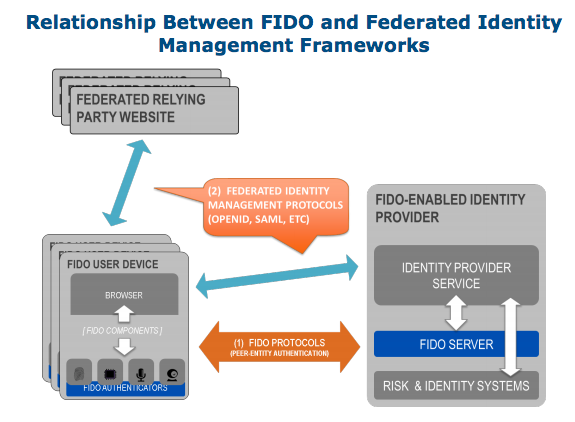- From: Tony Arcieri <bascule@gmail.com>
- Date: Mon, 7 Dec 2015 19:16:35 -0800
- To: Dave Longley <dlongley@digitalbazaar.com>
- Cc: "msporny@digitalbazaar.com" <msporny@digitalbazaar.com>, Web Payments IG <public-webpayments-ig@w3.org>, Credentials CG <public-credentials@w3.org>
- Message-ID: <CAHOTMVLMkaXtyqG3ftXNw9yCTau+gNMgJ8JgKKV9BD2uVaM8QA@mail.gmail.com>
On Mon, Dec 7, 2015 at 6:16 PM, Dave Longley <dlongley@digitalbazaar.com> wrote: > > Identity-centric systems are exactly how we wind up with ambient > > authority and confused deputies, because they cannot model > > authorization decisions across more than two principals. > > > > See: http://waterken.sourceforge.net/aclsdont/current.pdf > > The Identity Credentials/Verifiable Claims work is about making it > possible to make and verify claims about identities in a user-centric, > standard way. This work is primarily about making it easy for people to > go about collecting and aggregating (as they see fit) verifiable claims > that third parties make about them -- and then being able to share > those claims with others, who can verify their authenticity. You might want to check out what the IETF Token Binding working group is doing: https://datatracker.ietf.org/wg/tokbind/charter/ http://www.browserauth.net/ This is a joint effort by Google and Microsoft, the results of which will likely end up in Chrome and Edge. They are specifically working on solutions for identity which follow the same-origin policy, such as origin-bound certificates (which can potentially be generated by e.g. a U2F/UAF token). By following the same-origin policy, these sorts of systems eschew problems around ambient authority and confused deputies, and also eliminate confusing user decisions by always doing the right thing: creating unique public key identities per site, and only allowing those identities to be used on the site where they are provisioned. Once you have this building block, however, you can build federated identity/access systems using the following approach: https://fidoalliance.org/wp-content/uploads/2014/12/DraftD-FIDO-Refarch-00.pdf [image: Inline image 1] > We may need to better refine the problem statement in order to clarify > this. We > welcome any specific language suggestions you may have. > "Claims" have a very specific meaning in federated identity and access systems, specifically those that come out of the "Zebra Copy" / SAML heritage. I would generally class them as AuthZ instead of AuthN, however it sounds like you're using the word "claims" to mean Claims-based Identity exclusively. I say it's AuthZ because fundamentally the IdP is authorizing a particular principal to use a given identity. I understand you're trying to steer away from the word "identity", possibly due to the long history of failed W3C projects around identity, but it sounds like you are taking claims, which are a generic idea, and use them exclusively for identity systems. All that said, I am not a fan of SAML and JWT: they try to solve what is fundamentally a multiparty AuthZ problem without cryptographically binding together credentials and claims. This leads to a class of attacks where a claim meant for party A can be used by party B. This was "solved" with optional AudienceRestrictions in SAML 2.0 and the "aud" attribute in JWT, but the latter remains optional and is not enforced. I've spent a long time studying attacks on systems like these, and also the EMV protocol which has similar issues, and my feeling is the root cause is a failure to cryptographically bind together all involved principals (e.g. using "holder-of-key proof" systems) > I will say that it is certainly true that this technology can be > integrated with access control systems. However, how one goes about > modeling an access control system, whether that be via the ACL model or > the Capability model, is a separate concern. > It sounds like what you're describing is fundamentally a Claims-Based Identity system, and it would be much less confusing if you just called it an identity system, or used claims to their full potential (as an AuthZ tool). Clearly the second model has advantages; but I believe this problem is > orthogonal to the Verifiable Claims work. It does fall squarely in the > realm of macaroons and, as I've said before, the two technologies could > play nicely with one another to implement these types of systems. Macaroons can be used to model IdPs via third-party caveats / discharge macaroons, but using them solely for the purpose of IdPs is using a fraction of their potential, which I guess gets back to my gripe about taking claims and using them exclusively for Claims-based Identity. They are one of the few technologies, however, that bind together credentials from multiple principals cryptographically, which not only dramatically reduces attack surface (see previous complaints about SAML/JWT audiences), but also enable privacy-preserving IdPs where an IdP can authorize a principal to use a particular identity without learning the third party they are authorizing an identity for. All that said: multiprincipal (3+) authorization decisions are an extremely difficult problem. Failure to solve the problem correctly gave us such attacks as CSRF and SAML confused deputy attacks where users are either authorized for the wrong audience or an audience misinterprets claims intended for a different audience. -- Tony Arcieri
Attachments
- image/png attachment: Screen_Shot_2015-12-07_at_6.45.33_PM.png

Received on Tuesday, 8 December 2015 03:17:26 UTC